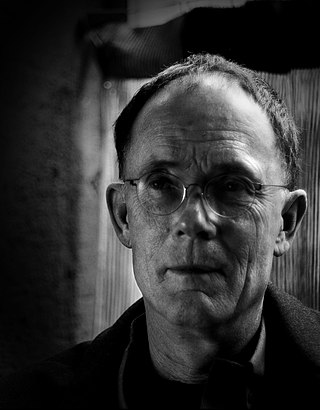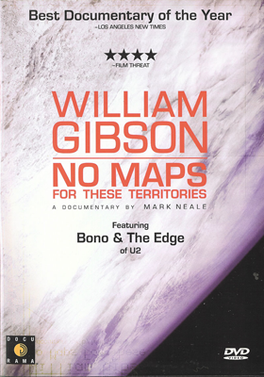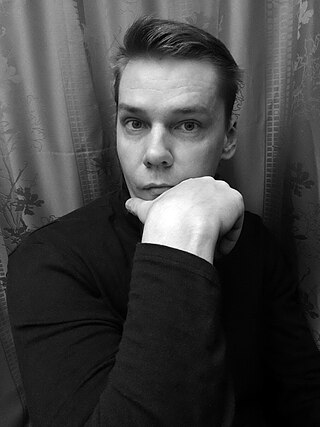
Hypertext is text displayed on a computer display or other electronic devices with references (hyperlinks) to other text that the reader can immediately access. Hypertext documents are interconnected by hyperlinks, which are typically activated by a mouse click, keypress set, or screen touch. Apart from text, the term "hypertext" is also sometimes used to describe tables, images, and other presentational content formats with integrated hyperlinks. Hypertext is one of the key underlying concepts of the World Wide Web, where Web pages are often written in the Hypertext Markup Language (HTML). As implemented on the Web, hypertext enables the easy-to-use publication of information over the Internet.
In general, a node is a localized swelling or a point of intersection.

Otaku is a Japanese word that describes people with consuming interests, particularly in anime, manga, video games, or computers. Its contemporary use originated with a 1983 essay by Akio Nakamori in Manga Burikko. Otaku may be used as a pejorative, with its negativity stemming from a stereotypical view of otaku as social outcasts and the media's reporting on Tsutomu Miyazaki, "The Otaku Murderer", in 1989. According to studies published in 2013, the term has become less negative, and an increasing number of people now identify themselves as otaku, both in Japan and elsewhere. Out of 137,734 teens surveyed in Japan in 2013, 42.2% self-identified as a type of otaku.

William Ford Gibson is an American-Canadian speculative fiction writer and essayist widely credited with pioneering the science fiction subgenre known as cyberpunk. Beginning his writing career in the late 1970s, his early works were noir, near-future stories that explored the effects of technology, cybernetics, and computer networks on humans—a "combination of lowlife and high tech"—and helped to create an iconography for the information age before the ubiquity of the Internet in the 1990s. Gibson coined the term "cyberspace" for "widespread, interconnected digital technology" in his short story "Burning Chrome" (1982), and later popularized the concept in his acclaimed debut novel Neuromancer (1984). These early works of Gibson's have been credited with "renovating" science fiction literature in the 1980s.

In computing, a hyperlink, or simply a link, is a digital reference to data that the user can follow or be guided to by clicking or tapping. A hyperlink points to a whole document or to a specific element within a document. Hypertext is text with hyperlinks. The text that is linked from is known as anchor text. A software system that is used for viewing and creating hypertext is a hypertext system, and to create a hyperlink is to hyperlink. A user following hyperlinks is said to navigate or browse the hypertext.
Hypertext fiction is a genre of electronic literature, characterized by the use of hypertext links that provide a new context for non-linearity in literature and reader interaction. The reader typically chooses links to move from one node of text to the next, and in this fashion arranges a story from a deeper pool of potential stories. Its spirit can also be seen in interactive fiction.

FreeMind is a free mind mapping application written in Java, which is further developed by the fork Freeplane. FreeMind itself was last updated in 2014. FreeMind is licensed under the GNU General Public License Version 2. It provides extensive export capabilities. It runs on Microsoft Windows, Linux, and macOS via the Java Runtime Environment.

Idoru is the second book in William Gibson's Bridge trilogy. Idoru is a science-fiction novel set in a postmodern, dystopian, cyberpunk future. One of the main characters, Colin Laney, has a talent for identifying nodal points, analogous to Gibson's own:
Laney’s node-spotter function is some sort of metaphor for whatever it is that I actually do. There are bits of the literal future right here, right now, if you know how to look for them. Although I can’t tell you how; it’s a non-rational process.

No Maps for These Territories is an independent documentary film made by Mark Neale focusing on the speculative fiction author William Gibson. It features appearances by Jack Womack, Bruce Sterling, Bono, and The Edge and was released by Docurama. The film had its world premiere at the Vancouver International Film Festival in October 2000.

Jane Yellowlees Douglas is a pioneer author and scholar of hypertext fiction. She began writing about hypermedia in the late 1980s, very early in the development of the medium. Her 1993 fiction I Have Said Nothing, was one of the first published works of hypertext fiction.
Hypervideo, or hyperlinked video, is a displayed video stream that contains embedded, interactive anchors, allowing navigation between video and other hypermedia elements. Hypervideo is similar to hypertext, which allows a reader to click on a word in one document and retrieve information from another document, or from another place in the same document. Hypervideo combines video with a non-linear information structure, allowing a user to make choices based on the content of the video and the user's interests.
Hubertus Bigend is a fictional character appearing in the third trilogy of novels of science fiction and literary author William Gibson. Bigend is the antihero of Gibson's Pattern Recognition (2003), Spook Country (2007) and Zero History (2010). In an interview Gibson says "I've always had a sense of Bigend as someone who presents himself as though he knows what's going on, but who in fact doesn't. It's just my sense of the subtext of the character: he's bullshitting himself, at the same time as he's bullshitting all of us."

The works of William Gibson encompass literature, journalism, acting, recitation, and performance art. Primarily renowned as a novelist and short fiction writer in the cyberpunk milieu, Gibson invented the metaphor of cyberspace in "Burning Chrome" (1982) and emerged from obscurity in 1984 with the publication of his debut novel Neuromancer. Gibson's early short fiction is recognized as cyberpunk's finest work, effectively renovating the science fiction genre which had been hitherto considered widely insignificant.
Project Forum is a non-profit organisation established in 2006 in Bratislava, Slovakia. The organisation’s main mission is to support education, promote culture and create space for debate and polemical exchange in Europe.

Spook Country is a 2007 novel by speculative fiction author William Gibson. A political thriller set in contemporary North America, it followed on from the author's previous novel, Pattern Recognition (2003), and was succeeded in 2010 by Zero History, which featured much of the same core cast of characters. The plot comprises the intersecting tales of three protagonists: Hollis Henry, a musician-turned-journalist researching a story on locative art; Tito, a young Cuban-Chinese operative whose family is on occasion in the employ of a renegade ex-CIA agent; and Milgrim, a drug-addled translator held captive by Brown, a strangely authoritarian and secretive man. Themes explored include the ubiquity of locative technology, the eversion of cyberspace and the political climate of the United States in the aftermath of the September 11, 2001 attacks.

Zero History is a novel by William Gibson published in 2010. It concludes the informal trilogy begun by Pattern Recognition (2003) and continued by Spook Country (2007), and features the characters Hollis Henry and Milgrim from the latter novel as its protagonists.

Hypertext is text displayed on a computer or other electronic device with references (hyperlinks) to other text that the reader can immediately access, usually by a mouse click or keypress sequence. Early conceptions of hypertext defined it as text that could be connected by a linking system to a range of other documents that were stored outside that text. In 1934 Belgian bibliographer, Paul Otlet, developed a blueprint for links that telescoped out from hypertext electrically to allow readers to access documents, books, photographs, and so on, stored anywhere in the world.
Social navigation is a form of social computing introduced by Paul Dourish and Matthew Chalmers in 1994, who defined it as when "movement from one item to another is provoked as an artifact of the activity of another or a group of others". According to later research in 2002, "social navigation exploits the knowledge and experience of peer users of information resources" to guide users in the information space, and that it is becoming more difficult to navigate and search efficiently with all the digital information available from the World Wide Web and other sources. Studying others' navigational trails and understanding their behavior can help improve one's own search strategy by guiding them to make more informed decisions based on the actions of others.
Gemini is an application-layer internet communication protocol for accessing remote documents, similar to the Hypertext Transfer Protocol (HTTP) and Gopher. It comes with a special document format, commonly referred to as "gemtext", which allows linking to other documents. Started by a pseudonymous person known as Solderpunk, the protocol is being finalized collaboratively and as of October 2022, has not been submitted to the IETF organization for standardization.

Yuri Anatolyevich Rydkin is a Russian and Belarusian poet, media artist, a bot poetry (bot-non-fiction) researcher.












